
Irwin is Going to the Country for the SummerA story about moving a printing press named
"Irwin". click on any
image for a close-up view 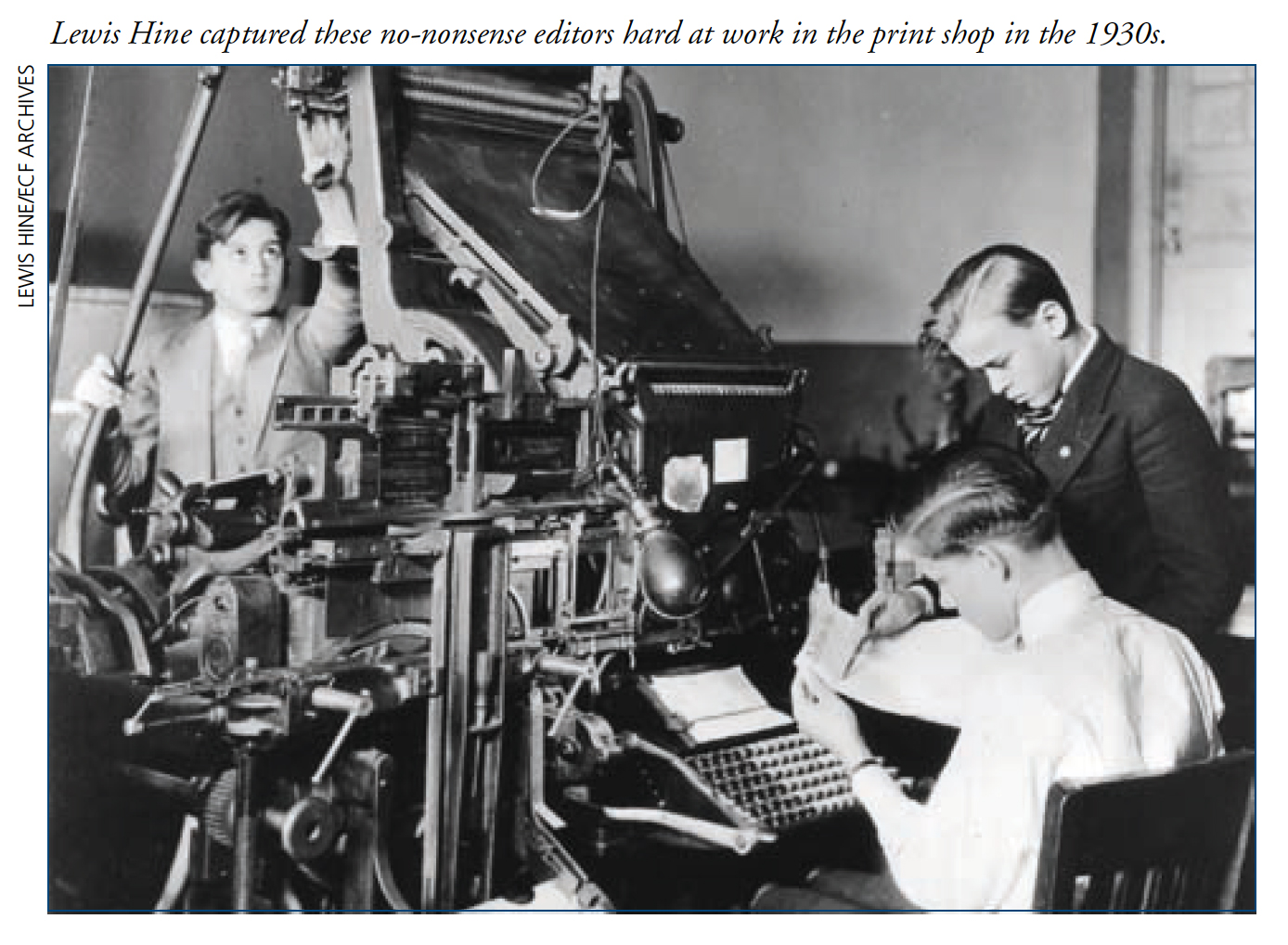 There's
some major remodeling being
done to the Graphics Studio at Fieldston School in New
York. This is the room where Fieldston students have
published their own newspaper since the days of the
Linotype and Flat Bed Cylinder. There's
some major remodeling being
done to the Graphics Studio at Fieldston School in New
York. This is the room where Fieldston students have
published their own newspaper since the days of the
Linotype and Flat Bed Cylinder. The photo to the right was taken by famed photographer Lewis Hines who had close ties to Fieldston before he went on to take some of the most well-known and impressive photographs of American History. He began his career at Fieldston...  And
the photo here is one of his most famous - a Fieldston
student in the classroom printing on a 6x10 Kelsey
Excelsior... This was part of a series of photos he did
featuring children doing adult jobs during the
Depression years. And
the photo here is one of his most famous - a Fieldston
student in the classroom printing on a 6x10 Kelsey
Excelsior... This was part of a series of photos he did
featuring children doing adult jobs during the
Depression years. Learning about printing and publishing has always been an important part of the Fieldston education. Many of their graduates have gone to great careers as editors and publishers of well-known newspapers and magazines. Others have made impressive careers in other fields. In 1930, Clara and Irwin Strasburger, early supporters of the Ethical Culture Fieldston School, donated two 10x15 Chandler & Price platen presses as their contribution to support Fieldston's interest in publishing. A plaque was mounted on the wall behind the presses, naming the 1890's Early Series press "Irwin" and the brand new (in 1930) New Series press "Clara" in honor of the donors. Since a class in the Graphic Arts is a Freshman requirement, nearly every student who had attended Fieldston between 1930 and 2010 has printed something on one of these presses. The list of the students who used these presses over the years reads like a who's who of well-know American figures - or the children of famous parents who chose to send their kids to Fieldston for the fine education available there. MOVING THE PRESS But times have changed and there is a greater focus on more modern technology in the Graphics Department these days, so we removed one of their 10x15 C&P Platen presses - the New Series Press, Clara - in 2010. We brought it back to the barn, removed its crankshaft, fitted Irwin's Early Series flywheel to it and took the new flywheel and shaft unit back to New York where we installed it into "Irwin" then mounted a treadle onto it and removed the old electric motor. Sadly, Irwin was then moved into a small, cramped room, where it had been pretty much unused for the past ten years. Students still learned to set type and print the "old school" way, but mostly just simple prints on the little Vandercook model 099 proof press. It was just an inconvenient location for the press. It needed a new space. 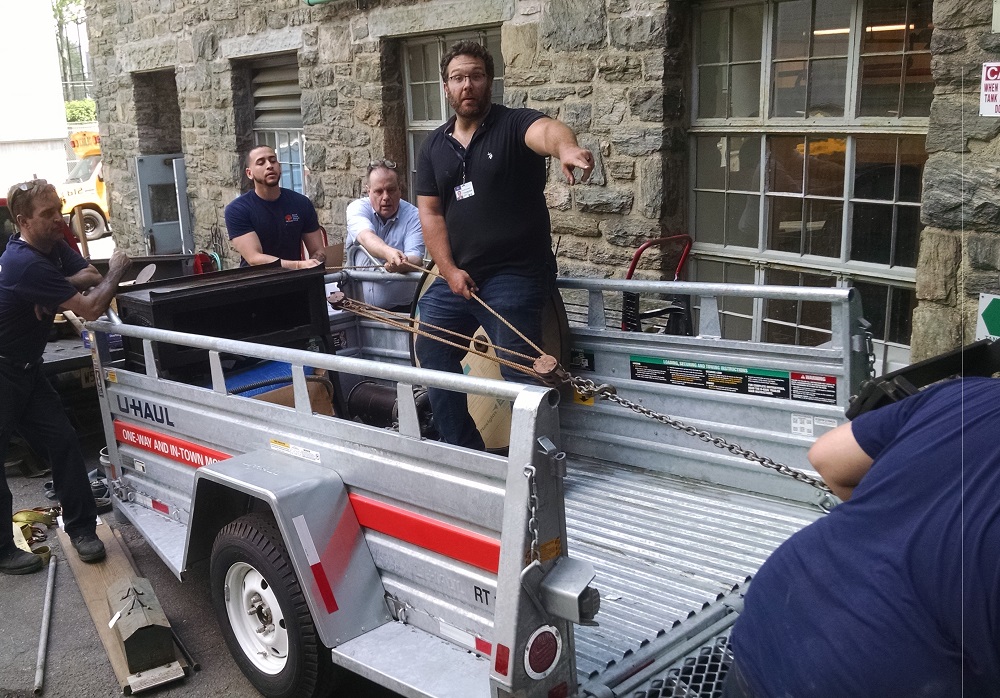 But
now the Graphics Art Departments space is being
remodeled and a new space is being made for Irwin. In
the meantime, Carl Smith, (title) asked me to come and
take Irwin back to my shop for some serious cleaning and
"spiffing up" this summer and return him in the fall
when the new space was ready. But
now the Graphics Art Departments space is being
remodeled and a new space is being made for Irwin. In
the meantime, Carl Smith, (title) asked me to come and
take Irwin back to my shop for some serious cleaning and
"spiffing up" this summer and return him in the fall
when the new space was ready. So. Long story short, we grabbed our favorite 6x10 U-Haul trailer and headed into New York City where the Fieldston crew did short work of getting Irwin out of the small room and onto the trailer. 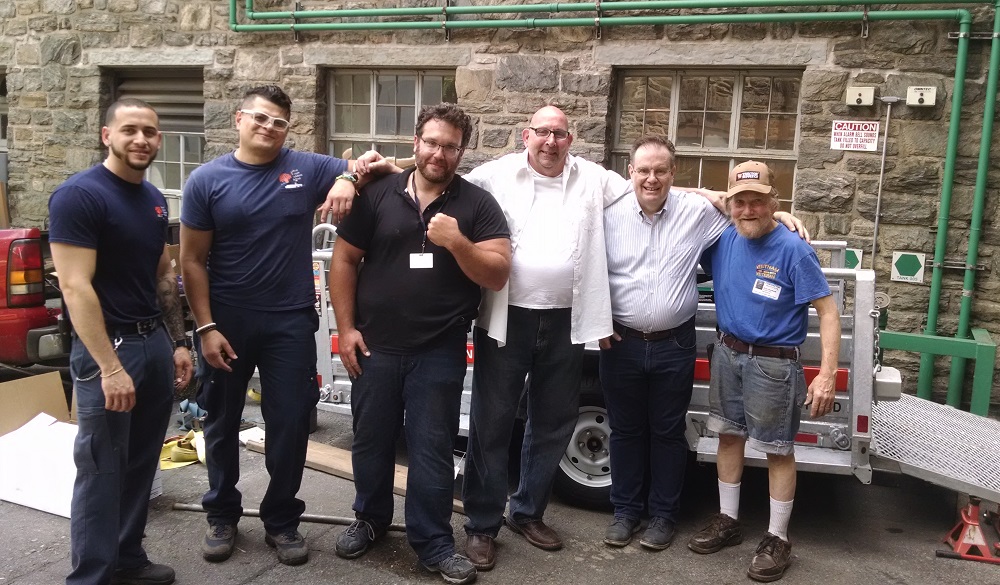 To the
left is a photo of the moving crew. Everyone helped -
even the foreman (the big guy) and Carl (the Director of
Graphic Arts) - everyone except for that old man in
shorts on the right. He just supervised. But then again,
that's what I was there for.... To the
left is a photo of the moving crew. Everyone helped -
even the foreman (the big guy) and Carl (the Director of
Graphic Arts) - everyone except for that old man in
shorts on the right. He just supervised. But then again,
that's what I was there for....So, with the press all loaded up, I headed out of the city and back to the quiet little print shop in the country... Where I proceeded to unload the press by myself - but with the help of a winch, a chain-hoist, some pipes, a small floor jack, big floor jack and gravity. I wasn't planning on unloading a 1500 pound press by myself, but I returned so late that the helpers I had arranged for were no longer available, and had to work the next day. But, it was all downhill, so to speak, so I tackled the job alone. But I did just cover it up for the night and went to bed. Better to unload in daylight and when well-rested. Now, there's one more thing to mention. During my two-hour drive back to the shop, I thought about the work I would be doing on the press before returning it in September. I couldn't devote full days to it; I had to work on it in 2-3 hour stints and I realized that if I unloaded the press across the road in the barn, I would be less likely to get over there to work on it. Besides, it needed a power-washing, which I couldn't do over there in any case - there is no water near the barn. 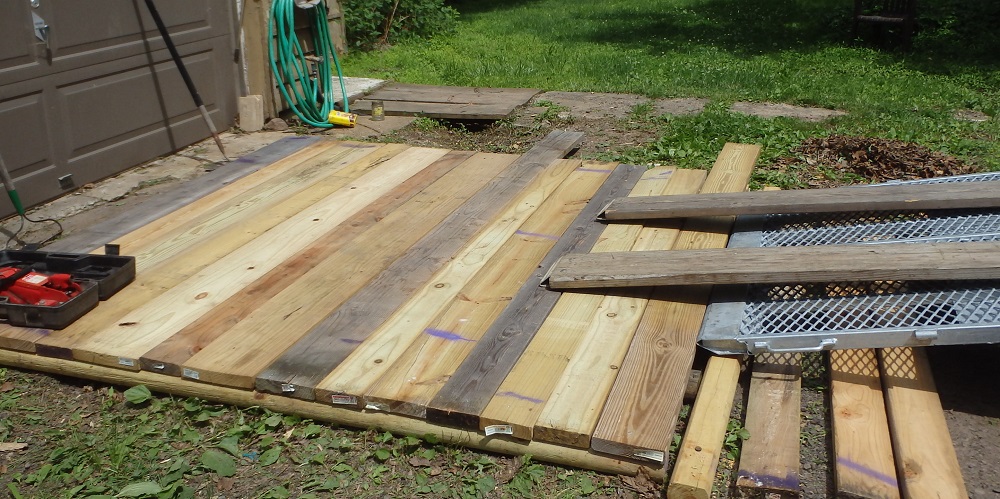 So,
I decided to unload here at my shop. But the shop is so
filled with presses right now that there's no more room
for another - much less a 10x15 C&P. Instead, I
decided to build a platform for it just outside the shop
and cover it with a really nice, sturdy quonset-hut
shaped tent - just like the one I've used for the past
three years to protect whichever tractor I am currently
using. I knew it was strong and water tight, and I knew
that I had the landscape timbers and 2x8s to build a
good, strong, level platform up off of the ground. Irwin
would be safe in there for the summer. So I built a
platform for the press(es). So,
I decided to unload here at my shop. But the shop is so
filled with presses right now that there's no more room
for another - much less a 10x15 C&P. Instead, I
decided to build a platform for it just outside the shop
and cover it with a really nice, sturdy quonset-hut
shaped tent - just like the one I've used for the past
three years to protect whichever tractor I am currently
using. I knew it was strong and water tight, and I knew
that I had the landscape timbers and 2x8s to build a
good, strong, level platform up off of the ground. Irwin
would be safe in there for the summer. So I built a
platform for the press(es).Unloading a press is not quite the reverse of loading it in all details. This press was loaded from a pallet jack and the husky men used a strong rope block and tackle to pull the press up onto the trailer. Loading that way required a lot of effort by a few strong men. The block and tackle is actually quite a bit faster than the chain-hoist, but it also requires far more effort. 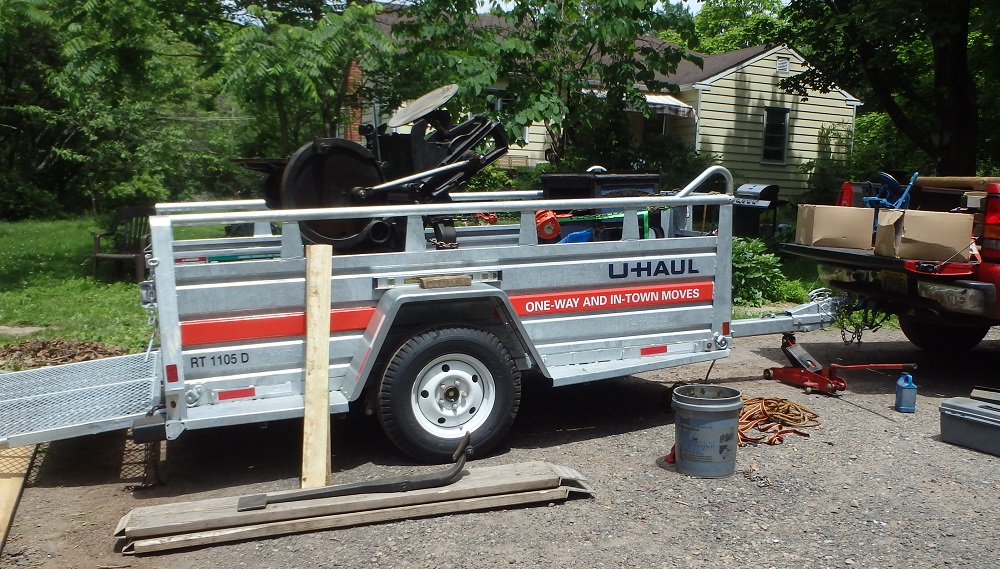 Since
I would be unloading by myself, I relied upon a small
jack to lift the press up onto the rolling pipes, the
chain hoist to keep the press from moving down too
quickly, a winch for backup safety and the large floor
jack to raise the tongue of the trailer enough so that
the press would simply roll down the sloped trailer,
onto the ramp and finally onto the platform I had built
for the presses. Since
I would be unloading by myself, I relied upon a small
jack to lift the press up onto the rolling pipes, the
chain hoist to keep the press from moving down too
quickly, a winch for backup safety and the large floor
jack to raise the tongue of the trailer enough so that
the press would simply roll down the sloped trailer,
onto the ramp and finally onto the platform I had built
for the presses. 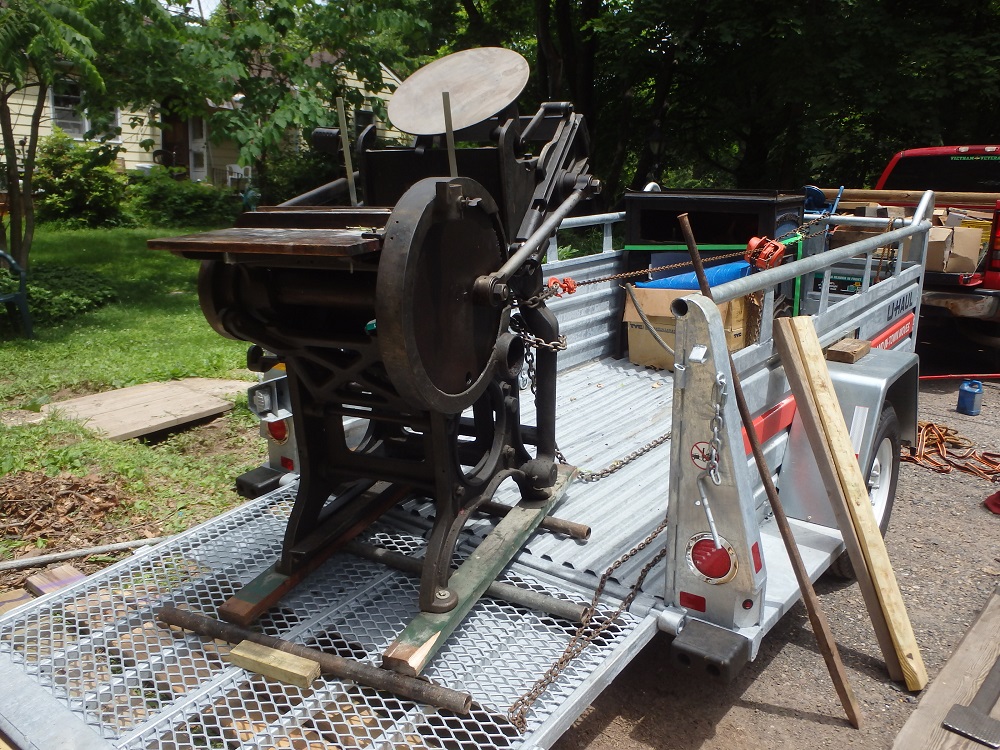 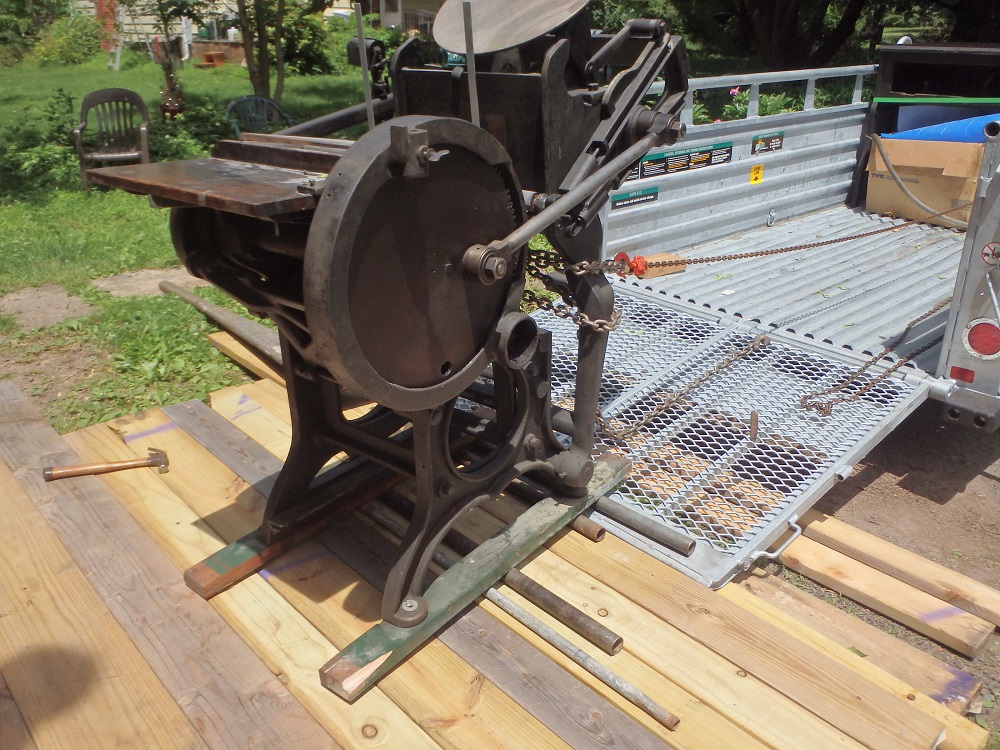 This
unloading process worked flawlessly. By mid-morning, I
had the platform built and by mid-afternoon, I had the
press on the platform - well, almost. This
unloading process worked flawlessly. By mid-morning, I
had the platform built and by mid-afternoon, I had the
press on the platform - well, almost. 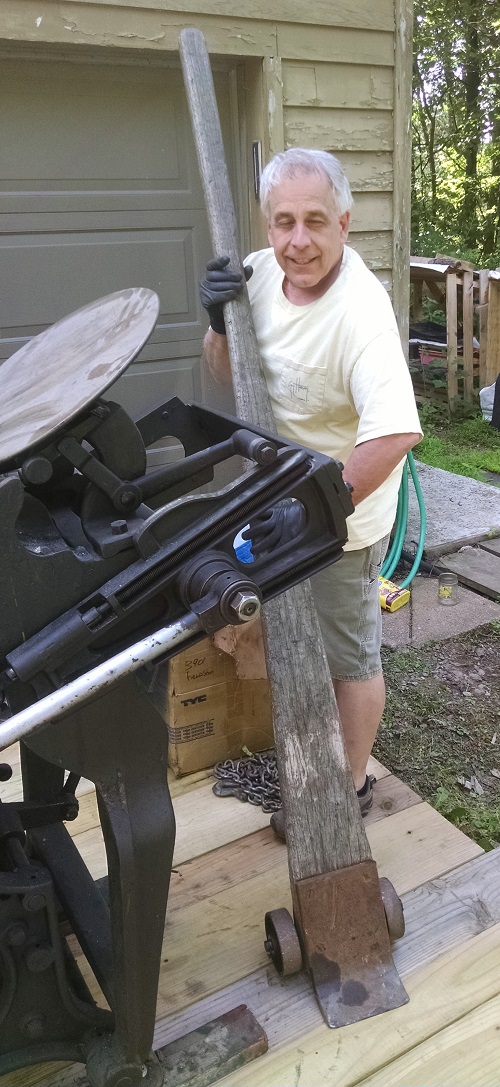 It had sort of
stopped when it got level so I waited until my friend
Burt came by to push it the last little bit. I could
have moved it with the pry bar, but Burt wanted to help,
so I let him. Burt had helped me move Clara out here in
2010, so it was like old times... Besides, I did need
help with the second press - Carl's own rare Damon &
Peets gravity proof press. It had sort of
stopped when it got level so I waited until my friend
Burt came by to push it the last little bit. I could
have moved it with the pry bar, but Burt wanted to help,
so I let him. Burt had helped me move Clara out here in
2010, so it was like old times... Besides, I did need
help with the second press - Carl's own rare Damon &
Peets gravity proof press. And then, when the C&P and Carl's Damon & Peets proof press were on the platform, I began to construct the tent above them. This tent is so light that I could easily move it out of the way when I went to work with the power washer - but strong enough to hold in the wind - if I screwed the base down to the platform. This new work space for me gives a whole new meaning to the phrase "press tent"... 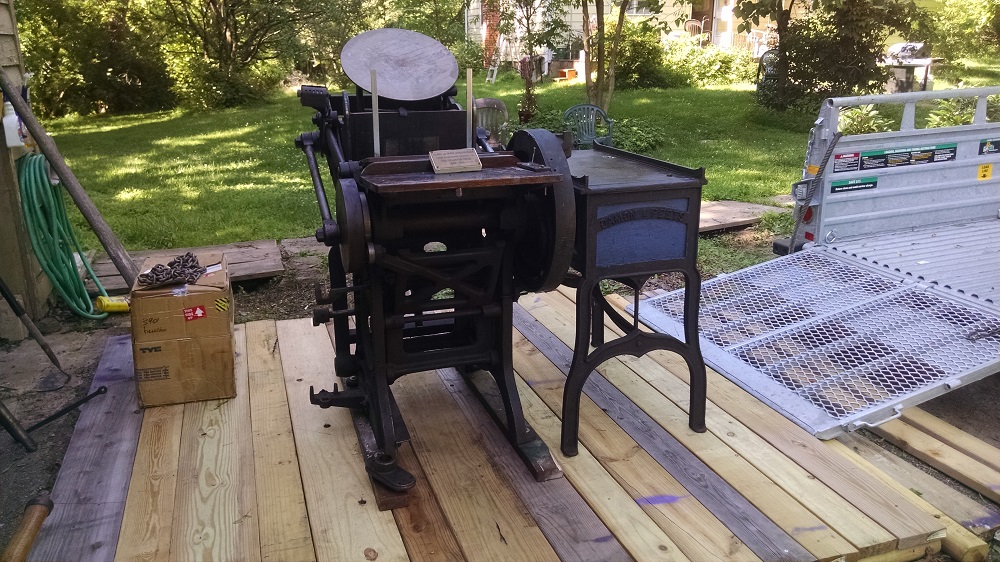
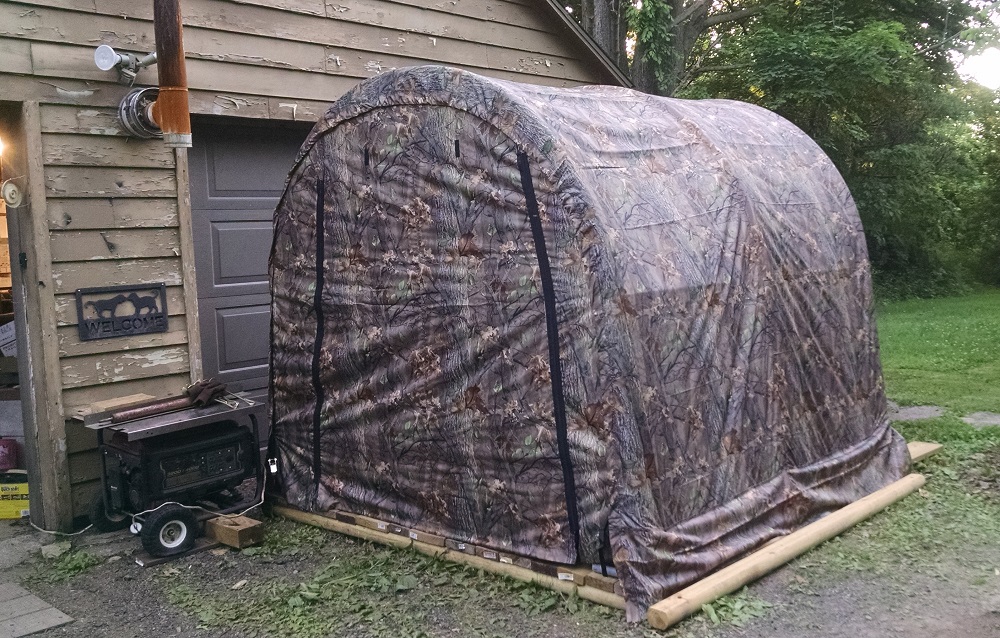 So. Irwin has come out the country for the summer. In September, he'll return to school all spiffed up and ready to continue the tradition and show a new crop of freshmen how a platen press works. page last updated July, 2019
|